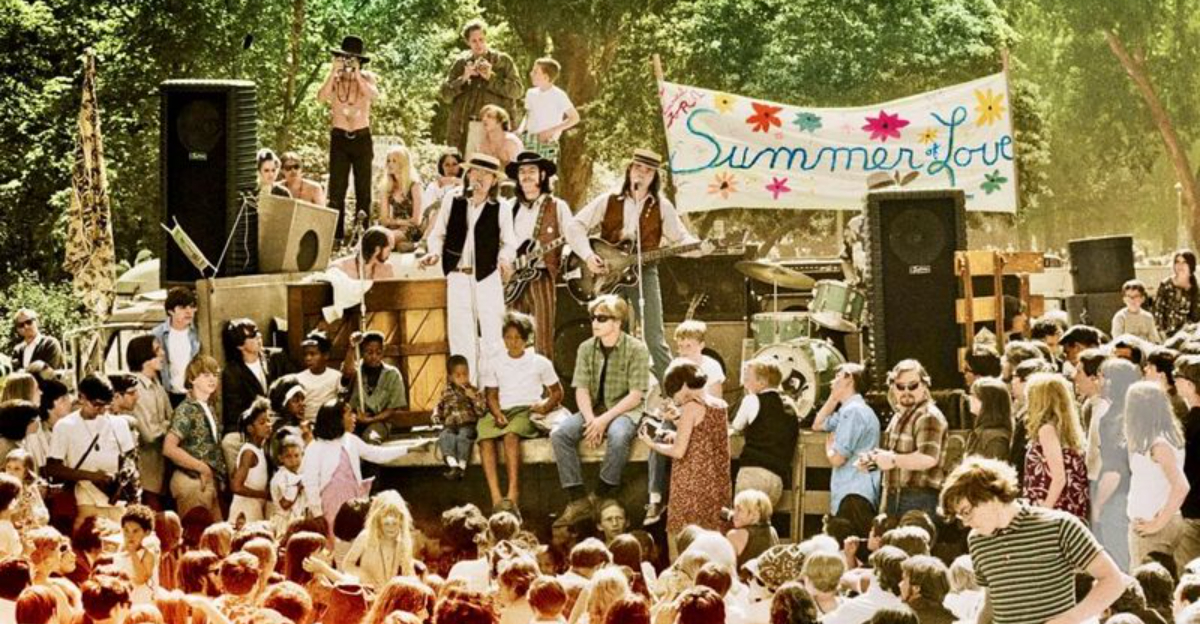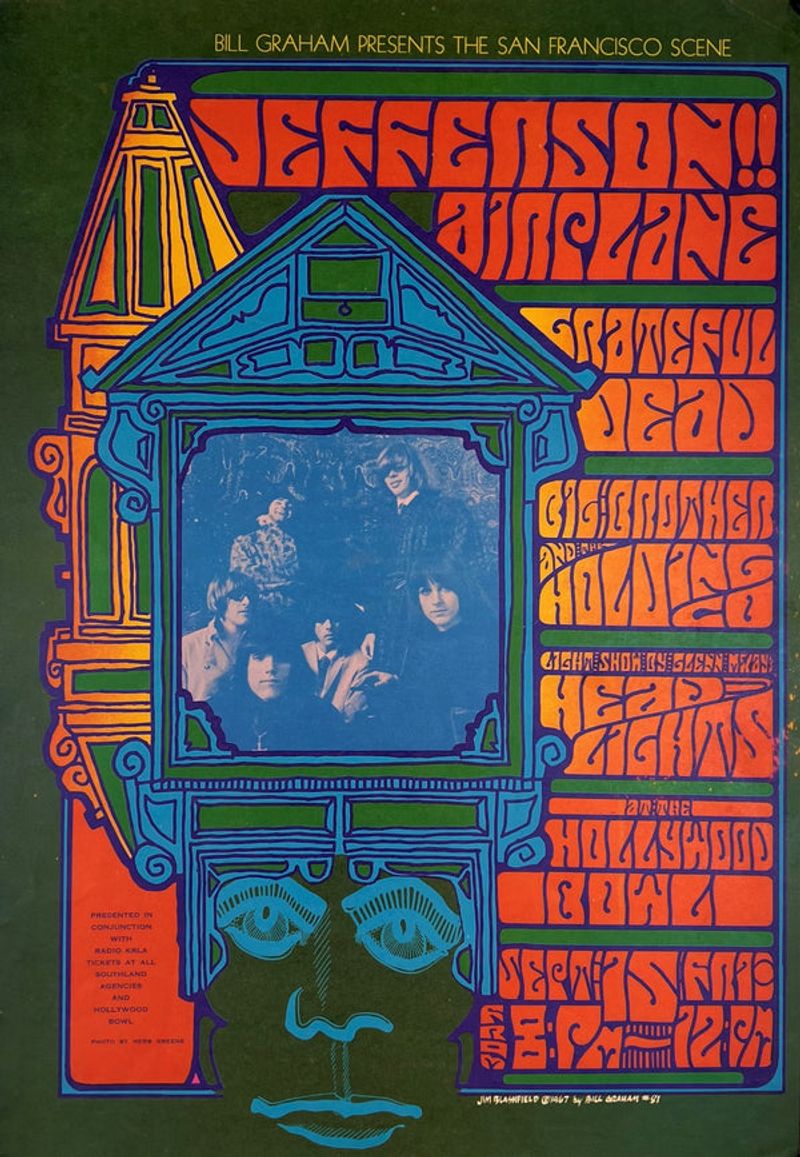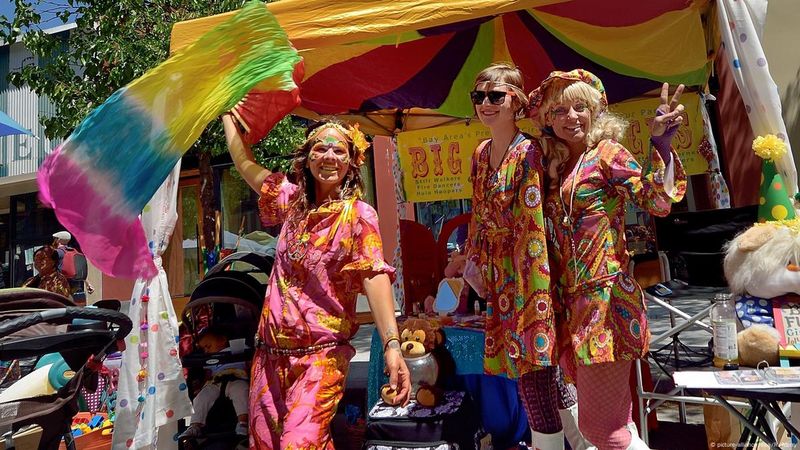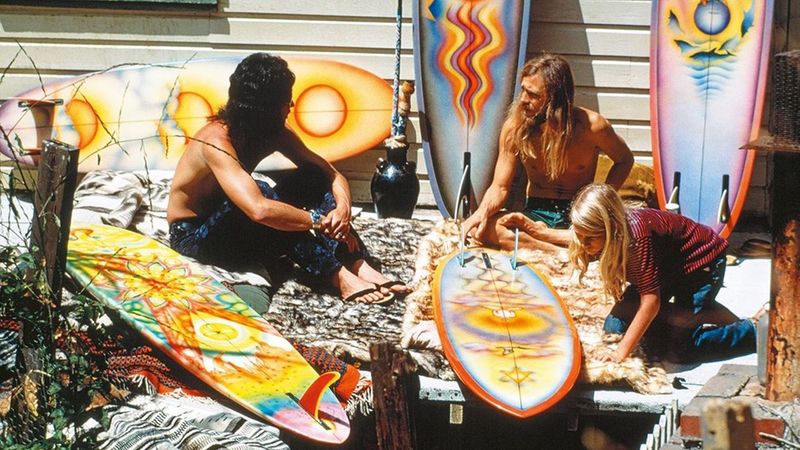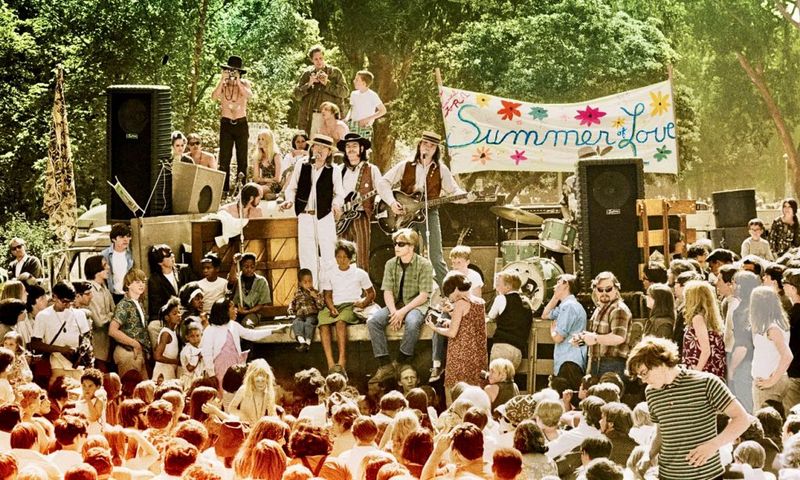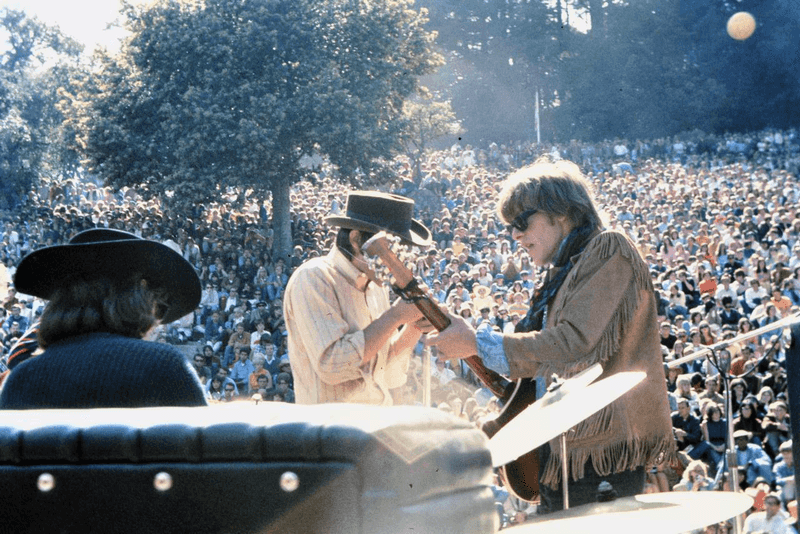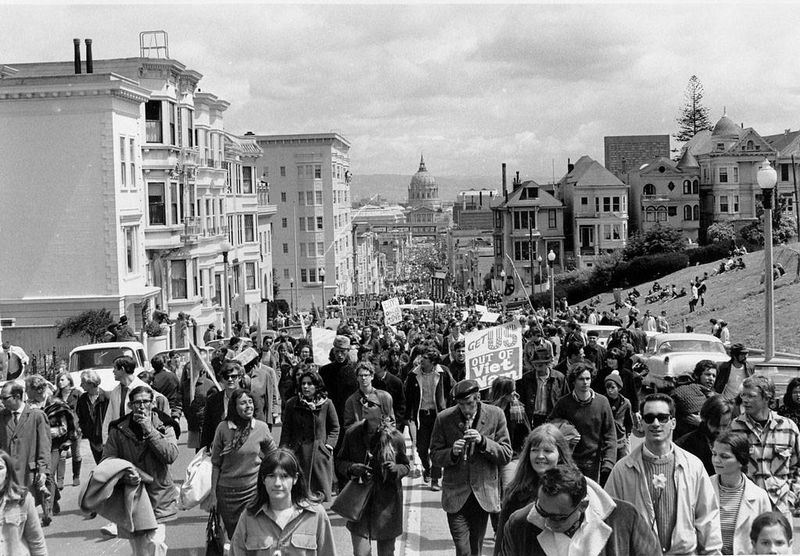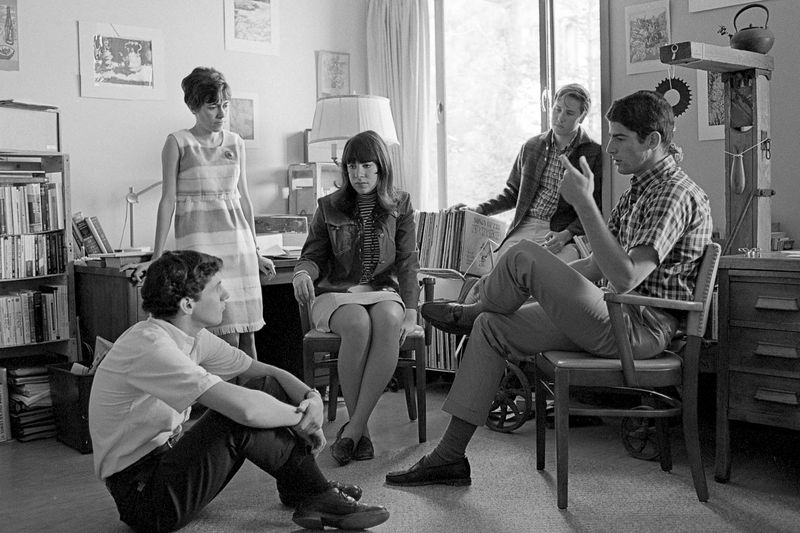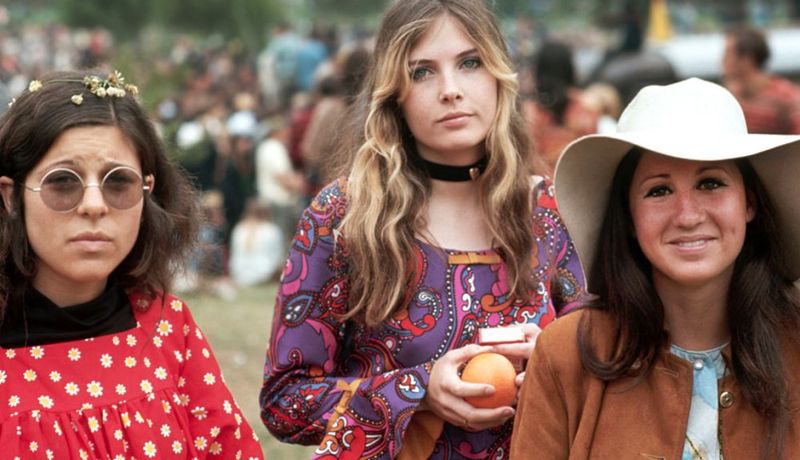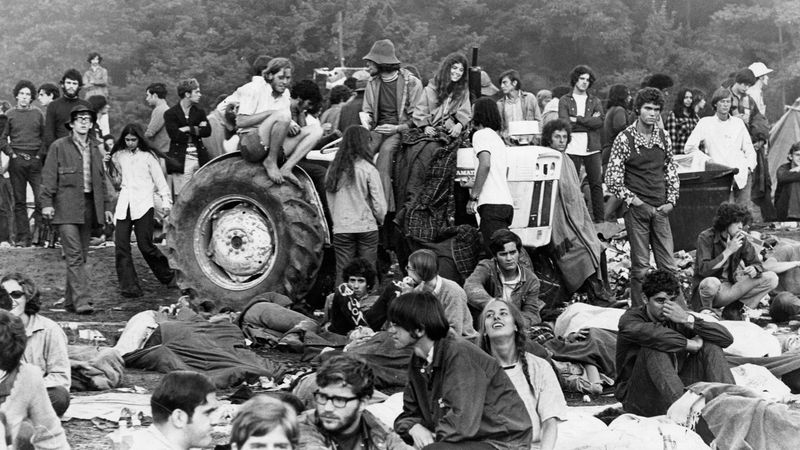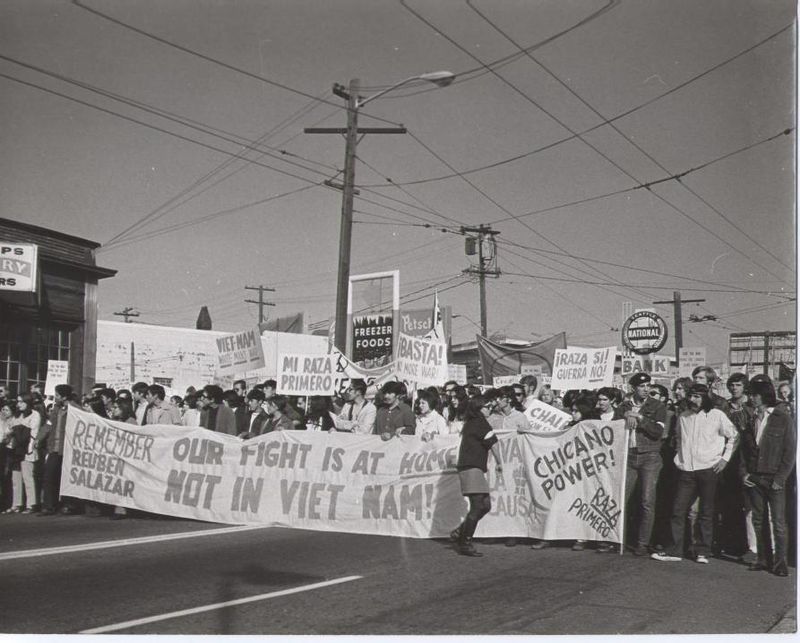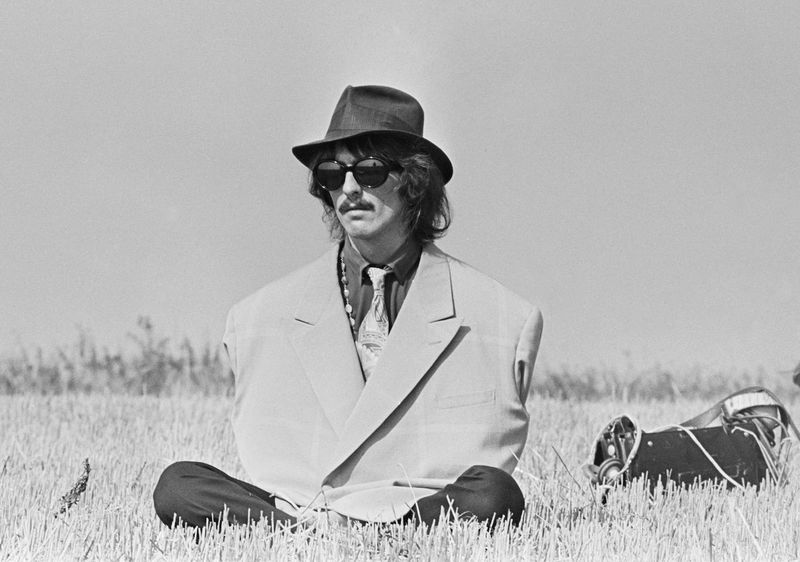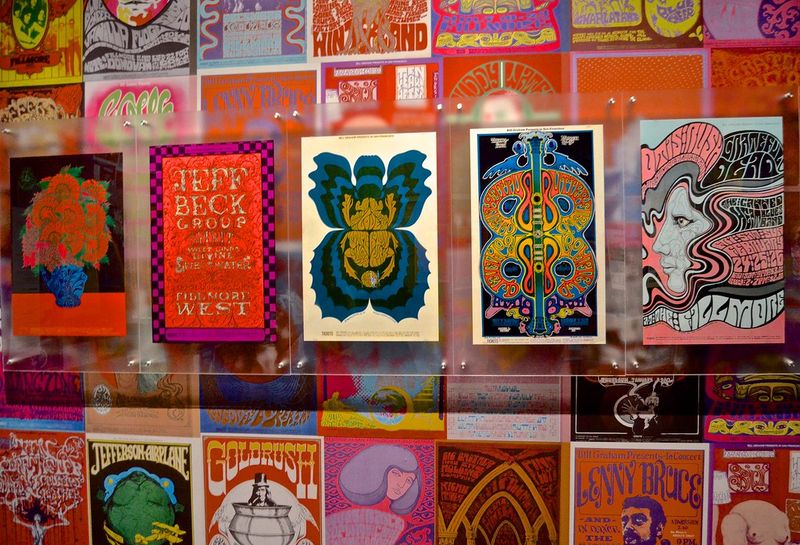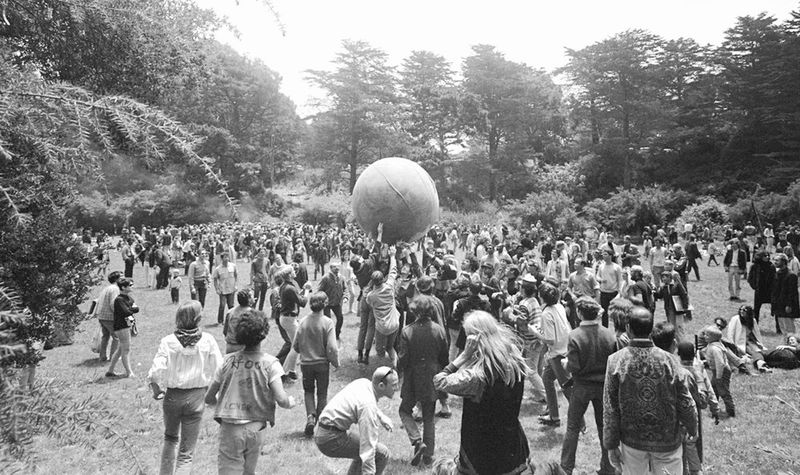The Haight-Ashbury district and the 1967 Summer of Love marked a pivotal moment in American history, forever altering the cultural, musical, and social landscape of the nation. From the rise of psychedelic rock to the birth of the hippie movement, these events spurred a wave of change that resonated throughout the country.
As a beacon of counterculture, Haight-Ashbury became synonymous with a new way of thinking, living, and expressing oneself, giving rise to numerous movements that continue to influence modern America. This article explores fourteen ways these phenomena left an indelible mark on the nation.
1. Psychedelic Rock Music
The Summer of Love popularized psychedelic rock, forever changing music. Bands like the Grateful Dead and Jefferson Airplane captured the era’s essence with experimental sounds and surreal lyrics.
Concerts became immersive experiences, with light shows and mind-bending visuals enhancing the music. This genre challenged conventions and opened doors to new creative possibilities.
Psychedelic rock’s influence is evident in today’s music landscape, inspiring countless artists across genres. By pushing boundaries and embracing innovation, these bands left a lasting impact that continues to shape music’s evolution.
2. Birth of the Hippie Movement
With flower power in full bloom, the hippie movement emerged as a symbol of peace and love. Young people flocked to Haight-Ashbury, seeking an alternative lifestyle rooted in harmony and spirituality.
The movement’s ideals—peace, love, and unity—spread like wildfire, challenging societal norms and advocating for change. The iconic imagery of peace signs and tie-dye became synonymous with this era of transformation.
Hippies not only influenced fashion and music but also ignited discussions on environmentalism and social justice, contributing to a broader cultural awakening that transcends generations.
3. Drug Culture Shift
As the summer unfolded, a profound shift in drug culture took place. LSD and marijuana became symbols of youth rebellion and spiritual exploration, embraced by many seeking enlightenment.
These substances were more than recreational—they were a means to expand consciousness and challenge established beliefs. The era’s experimentation laid the groundwork for ongoing debates about drug policies and legalization.
While controversial, this shift sparked discussions about personal freedom and alternative lifestyles, leaving a complex legacy that continues to influence today’s cultural and legal landscape.
4. Counterculture Capital
In 1967, Haight-Ashbury transformed into the epicenter of a cultural revolution. The district buzzed with artists, musicians, and free spirits who rejected traditional norms. This melting pot of creativity and rebellion drew thousands seeking freedom and expression.
The vibrant atmosphere gave birth to a counterculture movement that questioned authority and celebrated individualism. Haight-Ashbury’s influence spread nationwide, turning San Francisco into a symbol of change.
This transformation laid the groundwork for future cultural revolutions, including the digital age that would later redefine modern society. The legacy of Haight-Ashbury still resonates in today’s pursuit of innovation and dissent.
5. Free Love and Sexual Liberation
Haight-Ashbury’s Summer of Love championed free love and sexual liberation, challenging traditional norms. The era encouraged open relationships and redefined intimacy.
This liberation was a statement against societal constraints, promoting acceptance and inclusivity. It inspired a reassessment of gender roles and relationships, paving the way for future movements.
The spirit of free love reverberated through subsequent decades, influencing how society perceives love and relationships today, emphasizing authenticity and personal choice.
6. Anti-War Protests
The Vietnam War became a catalyst for youth activism, sparking widespread anti-war protests. Haight-Ashbury served as a hub for organizing peace rallies and advocating for change.
The protests were fueled by a desire for a more peaceful world, challenging governmental policies and demanding accountability. This era of activism empowered young people to raise their voices and fight for justice.
The legacy of these protests endures, influencing contemporary movements that seek to address global conflicts and advocate for peace on a broader scale.
7. Communal Living Trend
Inspired by ideals of sharing and cooperation, many embraced communal living during the Summer of Love. These communities emphasized collective well-being over individualism.
Communes became experimental grounds for alternative living arrangements, focusing on sustainability and harmony with nature. This trend questioned societal norms and materialism, offering a glimpse into a different way of life.
The influence of communal living is seen in today’s eco-villages and cooperative housing, reflecting a continued interest in sustainable and intentional communities.
8. Fashion Revolution
The Summer of Love transformed fashion, bringing bohemian styles to the forefront. Fringed vests, bell-bottoms, and floral prints became symbols of individuality and creative expression.
Fashion during this era was more than clothing—it was a statement of identity and rebellion against conformity. The eclectic styles inspired self-confidence and freedom.
The legacy of this fashion revolution is evident in modern trends that celebrate diversity and self-expression, proving that style can be a powerful tool for social commentary.
9. Modern Music Festivals
The spirit of the Summer of Love lives on in modern music festivals. Events like Woodstock drew inspiration from 1967’s ethos of peace, love, and music.
These festivals became cultural phenomena, celebrating diversity and unity through shared musical experiences. They provided a platform for emerging artists and fostered a sense of community.
Today, music festivals continue to thrive, reflecting the enduring impact of Haight-Ashbury’s celebration of creativity and connection.
10. Youth in Politics
The era elevated the role of youth in politics, empowering them to demand societal change. Young activists mobilized, advocating for civil rights, environmentalism, and social justice.
This newfound political voice challenged the status quo, highlighting the importance of youth engagement in shaping the future. It inspired generations to participate in civic life.
Today, young people’s influence in politics is more significant than ever, as they continue to lead movements for equality and justice worldwide.
11. Mental Health Transformation
The Summer of Love sparked a transformation in attitudes toward mental health. Alternative therapies and Eastern philosophies gained popularity, offering new paths to well-being.
Yoga, meditation, and holistic practices became integral to personal growth and healing, challenging traditional approaches to mental health.
This shift encouraged openness and exploration, contributing to a broader understanding of mental health that values mindfulness and self-care.
12. Artistic Expression
The era was a renaissance of artistic and poetic expression. Creativity flourished as people sought to capture the spirit of the times through various art forms.
Artists and writers explored new ideas, breaking free from conventional constraints. Their work reflected the cultural shifts and emotional landscape of the era.
This period of artistic exploration left a lasting impression on creative communities, inspiring future generations to challenge norms and express themselves authentically.
13. Social Justice Awareness
The Summer of Love brought national attention to social justice issues. Movements for civil rights, women’s liberation, and LGBTQ+ rights gained momentum.
Haight-Ashbury served as a backdrop for activism, highlighting the importance of equality and human rights. These movements challenged systemic inequalities and inspired change.
Their legacy is seen in today’s ongoing struggles for justice, as society continues to strive for a more inclusive and equitable world.
14. Reimagining the American Dream
The Summer of Love challenged the American Dream, trading materialism for self-discovery and exploration. Haight-Ashbury became a symbol of new possibilities beyond conventional success.
This reimagining encouraged individuals to define their path, emphasizing experiences over possessions. It inspired a generation to seek fulfillment through creativity and personal growth.
Today’s diverse interpretations of success reflect this shift, as people prioritize purpose and passion in their pursuit of happiness.
